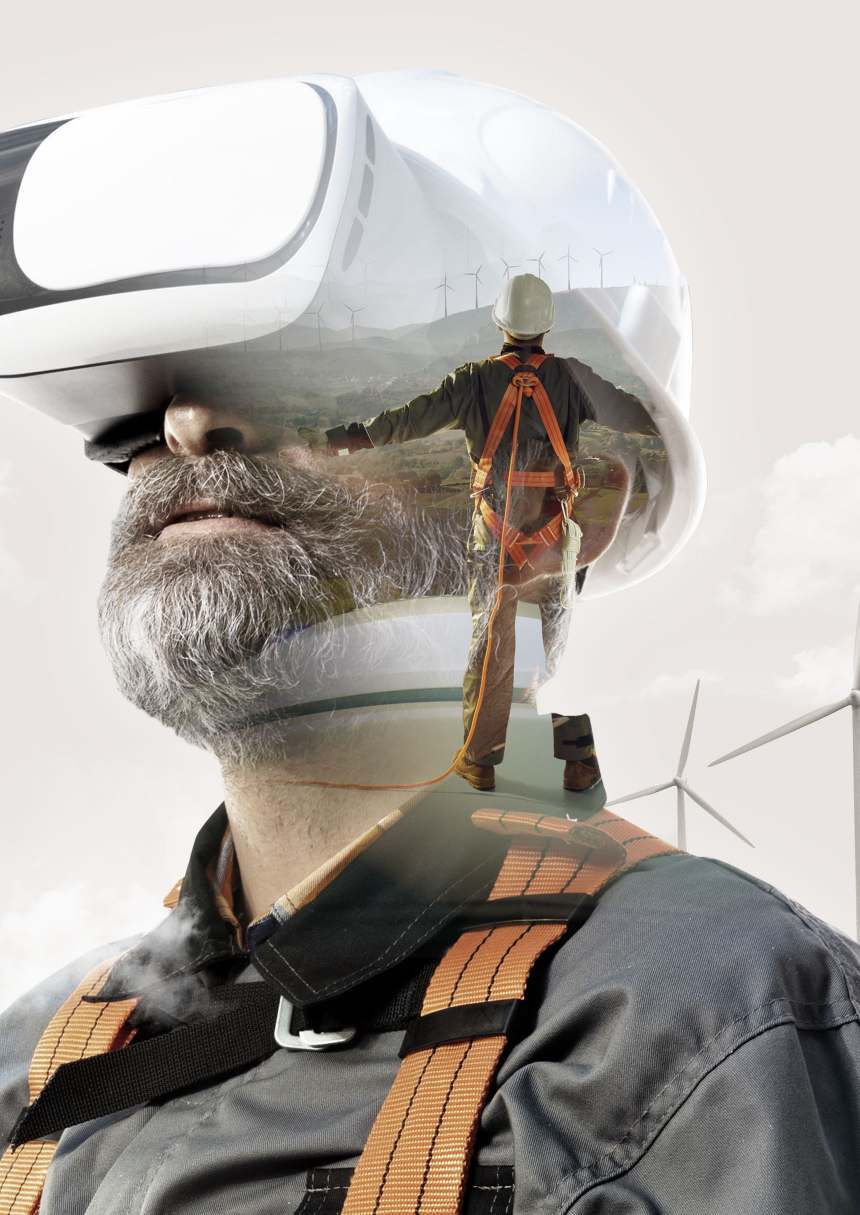VR training for efficiency & improved results

Companies worldwide dedicate large resources on training their employees, personnel or staff members. There is no doubt about the value of these trainings, especially in the industrial sector. However, what if costs can be cut down without sacrificing quality? This is where virtual reality comes into play.
By training in VR, companies can train their employees without the limitations associated with physical training. Moreover, the necessary time and costs can be cut down. Training can take place anytime and anywhere, while also increasing safety. VR Training Academy (VRTA), an initiative from Serious VR, aims to make these training applications accessible to companies of all sizes.
A shared vision
Founders Ton Kuper and Marjo Nieuwenhuijse have been working together on these practical VR trainings for a number of years. Marjo drew from her work experience to devise a plan. “As a company advisor I noticed a need for training methods without the usual downsides. Often the productions needed to be stopped during the training, costing money and time.” Ton and Marjo found each other with a shared vision about this market opportunity: this is where VR can be deployed with great value. VR training is not only more cost effective, it grants companies with flexibility not possible before. “Training no longer has to take place on the factory floor, for example. Companies can train their employees with the same content anywhere around the world.”
With VRTA Ton and Marjo have built a platform with an ever growing selection of widely applicable training applications. “Our NEN3140 training is a good example of this. The training is based on a widely adopted standard. This means many companies can use the training, as it is not built specifically for one client,” Marjo remarks. VRTA offers not only the training application itself: an extensive dashboard platform is part of the package.

The dashboard offers detailed information about the performance of the users of the training. We call this our performance analytics. Learning from mistakes is only possible if insight into these mistakes is possible. That is exactly what the dashboard offers. Users can view their mistakes and try to improve them in the next training session. Company trainers can use these dashboards to gain insights into the strengths and weaknesses of any given employee that has participated in any given VR training. “The platform is now live and ready, but it is also forever evolving”, Ton adds. “Our team of developers and educational experts are continuously working to improve the platform based on the needs of our clients and partners.”
Intelligence, emotions and now skills
The VRTA platform and its performance analytics are not just numbers. A variety of performance indicators were selected based on academic research. These indicators were then matched with the trainings to make performance measurable. This part is key, Marjo explains. “While the definition of a professional is clear, companies often struggle to determine whether someone is indeed a professional. Everything that is measurable can still be subjectively graded.” Therefore, VRTA already has a new quotient in development: the Skills Quotient. “In our society we already adopted the IQ and EQ factors, now we also want to measure skills and performance.” This completes the package: not only can a VR training cut down on resources and time, the training also produces a measurable statistic.
Value in assessment
VRTA training applications generally consist of three parts: instruction, scenario(s) and an assessment. During the instruction, the user is guided through every step. The instruction is also included to ease the user into using the application. Not everybody is used to virtual reality. For example, a valve may be highlighted to indicate an action is to be taken here. Sometimes a transparent copy of an object is used. This ‘ghost’ shows the user where a fuse needs to be placed for instance. In an instruction, no mistakes can be made.
The scenarios are different. The procedure is the same, but now the user has to reproduce the steps from the instruction on their own. This is where the user has to rely on their own knowledge and memory. They can make mistakes, correct themselves and learn in an interactive environment. Got stuck? With a press of the button the help systems are reenabled. The challenge in the scenario can be the same as in the instruction, but it is also possible to create variations. In these variations, the user may be confronted with a different situation or a distraction. “Companies find the scenarios particularly valuable. In VR we can confront employees with situations and distractions that are simply not feasible in a physical training”, Marjo explains. “And even if they are possible, it would not be realistic cost wise.”
Finally, the assessment is used to evaluate the employee. The challenge is again the same as the scenario, but now all scoring and monitoring is active. The results for each user can be viewed in the VRTA dashboard. Marjo: “There is great value for companies here. Not only can companies train existing employees, but the assessment can also be used in a selection process with applicants. For example, invite ten applicants for an order picking job and have them do our order picking assessment. Those who pass move on to the next selection phase.” Not only is this an efficient way of working, it has other benefits too. “Our application always evaluates objectively based on parameters set beforehand. It takes human emotional judgement out of the equation”, Marjo adds.
What advantages can Virtual Reality bring to your company?
Interested? Check out the VRTA website at vrtraining.academy for more information and the latest offerings.